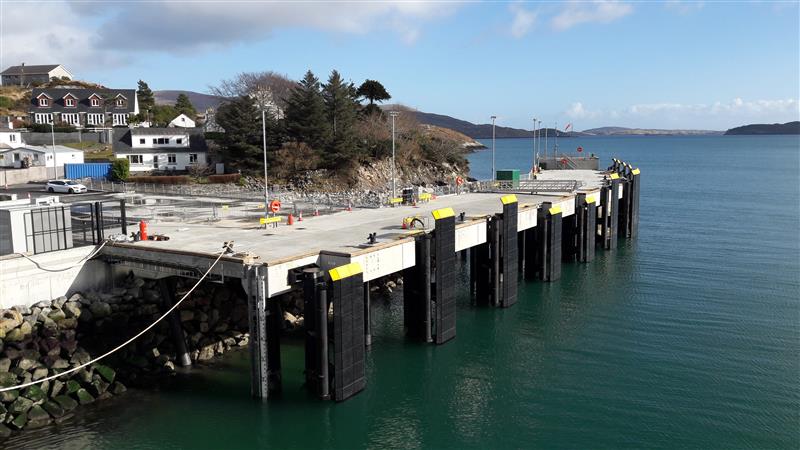Port Safety: An Ongoing Challenge in the Era of Larger Ships

As vessels increase in size and complexity, ports and terminals worldwide face the ongoing challenge of adapting their infrastructure. This adaptation, however, presents an opportunity to create safer environments and mitigate risks of accidents. Recent data from ship vetting company, Rightship, underscores the urgency of this transformation: half of all maritime incidents occur within port boundaries, including events at berth, anchorage, and during harbor transits.
This statistic serves as a stark reminder of the vulnerabilities faced by ship owners, ports, and terminal operators across the globe. The potential for unplanned downtime, reduced service levels, and reputational damage cannot be overstated. Considering these risks, the timely maintenance and inspection of routinely used critical assets such as mooring and berthing becomes extremely crucial.
Fenders, in particular, play a crucial role in berthing structures, especially as ships continue to grow in size and inspecting them on a timely basis becomes even more crucial. Equally important is reevaluating the entire fender system's performance to ensure it can effectively handle the evolving ship sizes, velocities, and navigation conditions. A fender failure during collision or heavy berthing can pose significant safety risks at a port, impacting both personnel and operations. Recognizing the necessity of expert and timely maintenance is crucial, as neglect can jeopardize the longevity of these well-engineered assets. The latest PIANC guidelines suggest that the effects of aging typically manifest in fenders after 20 years of use. Without proactive maintenance, the durability of these assets—designed to last at least 20 years—may be compromised.
Beyond the Human touch: Leveraging Drone Technology in Fender Inspections
As the industry embraces technological advancements, we are witnessing an extension of innovation into specialized tasks such as port surveillance and resource-intensive maintenance or inspections. Drone technology, employing unmanned aerial vehicles equipped with high-resolution cameras and advanced sensors is at the forefront of this transition, offering a more sophisticated alternative to traditional inspection methods.
These drones can meticulously assess the condition of maritime fenders, capturing detailed visuals of wear and tear, structural damage, and other potential issues with remarkable accuracy. Their ability to access hard-to-reach areas ensures a comprehensive evaluation of fender conditions. Moreover, this approach ensures enhanced safety and efficiency by significantly reducing exposure to hazardous environments and mitigating accident risks, while allowing for more frequent inspections with minimal operational disruption. As drones capture high-resolution images and videos, it helps in creating a comprehensive visual library of port infrastructure that enables year-on-year comparisons and facilitates the monitoring of gradual deterioration over time. This data-driven approach to fender maintenance allows for timely actions, informed decision-making, and preemptive repairs. By comparing current images with historical data, port authorities can track changes, schedule proactive maintenance, and make more precise decisions regarding infrastructure upkeep. This capability for early detection of potential issues ensures the structural integrity and effectiveness of fender systems, ultimately leading to improved safety and operational efficiency in port environments.
Regulatory Considerations
While implementing drone technology requires navigating complex regulatory frameworks, recent developments are encouraging. According to reports, The International Maritime Organization (IMO) has addressed the use of innovative technology, including drones for maritime inspections, collaborating with the International Association of Classification Societies (IACS) to develop guidelines for remote inspection techniques. This step allows companies to leverage drone technology without legal complications or reputational risks. Trelleborg has already successfully conducted drone inspections at multiple sites in Australia.
As we navigate this technological shift, stakeholders must engage in informed decision-making processes, considering both the benefits and potential challenges of using this technology.
Proactive Asset Management: A Cornerstone of Ongoing Safety
Regardless of the chosen approach, proactive inspections are crucial for identifying potential risks and addressing known hazards promptly. In a high stakes maritime environment, safety needs to be viewed as an ongoing process of assessment, having corrective measures in place, monitoring the effectiveness of the corrective measures, and refining strategies around asset management. Understanding that safety goes beyond just a one-time effort not only ensures operational continuity but also contributes to the long-term sustainability and safety of our ports and terminals.
To learn more about latest advancements in fender inspection, including drone technology applications and best practices for proactive asset management, join our upcoming webinar on expert fender inspection techniques. Register here for to secure your spot.